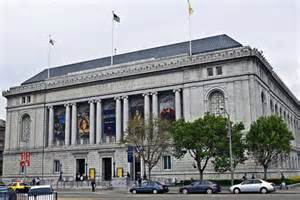May 31 2019 - Aug 18 2019
Asian Art Museum of San Francisco
San Francisco, CA

The colorful dragon you saw writhing on the arm of your barista this morning. The bold lion surrounded by peonies inked on the torso of that guy at the gym. Maybe the snake circling your own ankle. Did you know tattoos like these can be traced back to a famous series of 19th-century Japanese woodblock prints, which was itself inspired by a popular 14th-century Chinese martial-arts novel?
Tattoos in Japanese Prints recounts how large-scale, densely composed pictorial tattoos — what we now recognize as a distinctly Japanese style — emerged in 19th-century Japan in tandem with woodblock prints depicting tattooed heroes of history and myth.
Nearly 800 superb prints by artist Utagawa Kuniyoshi (1797–1861) and his contemporaries from the noted collection of the Museum of Fine Arts, Boston, explore the interplay between ink on paper and ink on skin. Kuniyoshi’s influential print series One Hundred and Eight Heroes of the Popular Water Margin (1827–1830), illustrating hero-bandits from a 14th-century Chinese martial-arts novel, probably both inspired and reflected a real-life tattoo trend — art into life and life into art.
Many of the characters in Kuniyoshi’s Water Margin prints sport elaborate tattoos. Other artists, seeing the popularity of these works, made their own prints of tattooed Water Margin heroes and went on to depict historical figures and Kabuki actors with prominent inked embellishment. The iconography of the tattoos in these prints, also found on the bodies of real-life Japanese urban men, included lions, eagles, peonies, dragons, giant snakes and the fierce Buddhist deity Fudo Myoo. These motifs — still popular today — evoked bravery, valor and strength.
The vogue for tattoos in Japan lasted until the early Meiji period (1868–1912), when the Japanese government prohibited them as part of its effort to modernize the country. Woodblock prints are some of the best documentation we have of real-life tattoos of 19th-century Japan, and they continue to provide models for worldwide tattoo artists today.
Nearly 800 superb prints by artist Utagawa Kuniyoshi (1797–1861) and his contemporaries from the noted collection of the Museum of Fine Arts, Boston, explore the interplay between ink on paper and ink on skin. Kuniyoshi’s influential print series One Hundred and Eight Heroes of the Popular Water Margin (1827–1830), illustrating hero-bandits from a 14th-century Chinese martial-arts novel, probably both inspired and reflected a real-life tattoo trend — art into life and life into art.
Many of the characters in Kuniyoshi’s Water Margin prints sport elaborate tattoos. Other artists, seeing the popularity of these works, made their own prints of tattooed Water Margin heroes and went on to depict historical figures and Kabuki actors with prominent inked embellishment. The iconography of the tattoos in these prints, also found on the bodies of real-life Japanese urban men, included lions, eagles, peonies, dragons, giant snakes and the fierce Buddhist deity Fudo Myoo. These motifs — still popular today — evoked bravery, valor and strength.
The vogue for tattoos in Japan lasted until the early Meiji period (1868–1912), when the Japanese government prohibited them as part of its effort to modernize the country. Woodblock prints are some of the best documentation we have of real-life tattoos of 19th-century Japan, and they continue to provide models for worldwide tattoo artists today.
Credit: Exhibition overview from museum website.
Image credit: Tsukioka Yoshitoshi, Konjin Chogoro, from the series Sagas of Beauty and Bravery, Japanese, Edo period, 1866. Woodblock print; ink and color on paper. William Sturgis Bigelow Collection
